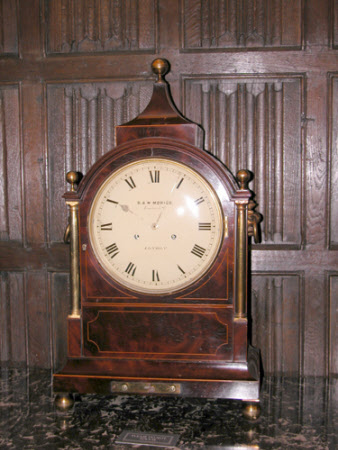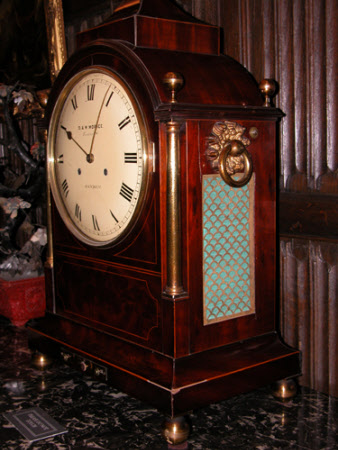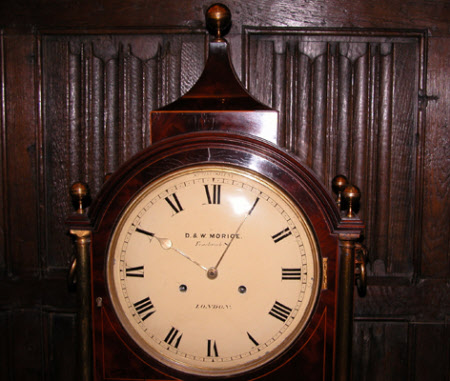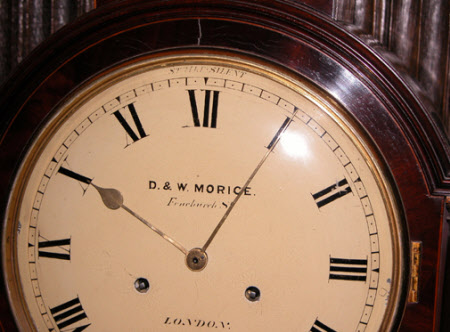Clock
D. and W. Morice
Category
Horology
Date
1820
Materials
Mahogany and brass
Measurements
720 x 420 x 260 mm; 10 in (Diameter)
Place of origin
Fenchurch Street
Order this imageCollection
Anglesey Abbey, Cambridgeshire
NT 514751
Summary
Mahogany mantel clock - chiming movement with whitened dial contained in case with concave-shaped canopy, arhced top. Base containing musical box mechanism, brass finial, column supports, side grilles, handles and ball feet. 8 day English quarter striking and musical spring clock in mahogany case, by D andW Morice, London, c.1820. 2 train 5 pillar fusee movement with dead beat escapement. Pendulum with screw down locking. Signed on backplate 'D and W Morice, Fenchurch Street, London'. Rack quarter striking on 2 bells. Convex white painted dial with Roman numerals, Strike/Silent lever above XII. Signed in dial centre as backplate. Gilt brass spade and poker hands with missing blued steel centre seconds hand. Mahogany break-arch case with pagoda top, with 4 brass finials, heavy brass carrying handles to sides and brass pillars flanking dial. Boxwood stringing to edges and front. 4 lacquered brass ball feet and fish-scale frets to sides. Fusee driven, 4 air Swiss musical box movement in base of case, with individual teeth on comb. Controls to box on front of base of clock, marked from left to right 'Silent, Play, Change'. Silent is for instant stop of play in mid tune. Play will operate the box and if returned to stop position will stop the box after one tune has played. Change will change the tune automatically after each has played; the other position will cause a tune to be played indefinitely. All levers operate by moving to the left. The musical box is wound by the square on the left hand side of the case. To the left of the backplate to avoid damaging the centre seconds hand is a redundant arbor which would have been used to active the music box. The musical box is a very early type, imported from Switzerland. The clock has no maintaining power, so, with music box, fine centre seconds hand and dead beat escapement, is a very vulnerable and fragile object.
Provenance
Bequeathed to the National Trust by Huttleston Rogers Broughton, 1st Lord Fairhaven (1896-1966) with the house and the rest of the contents.
Makers and roles
D. and W. Morice



